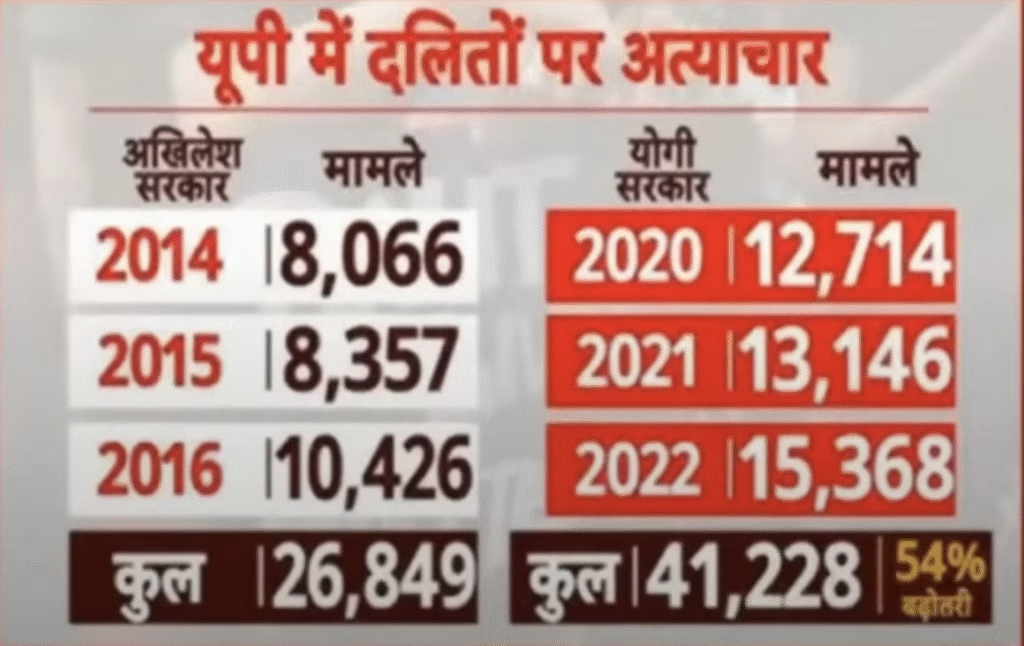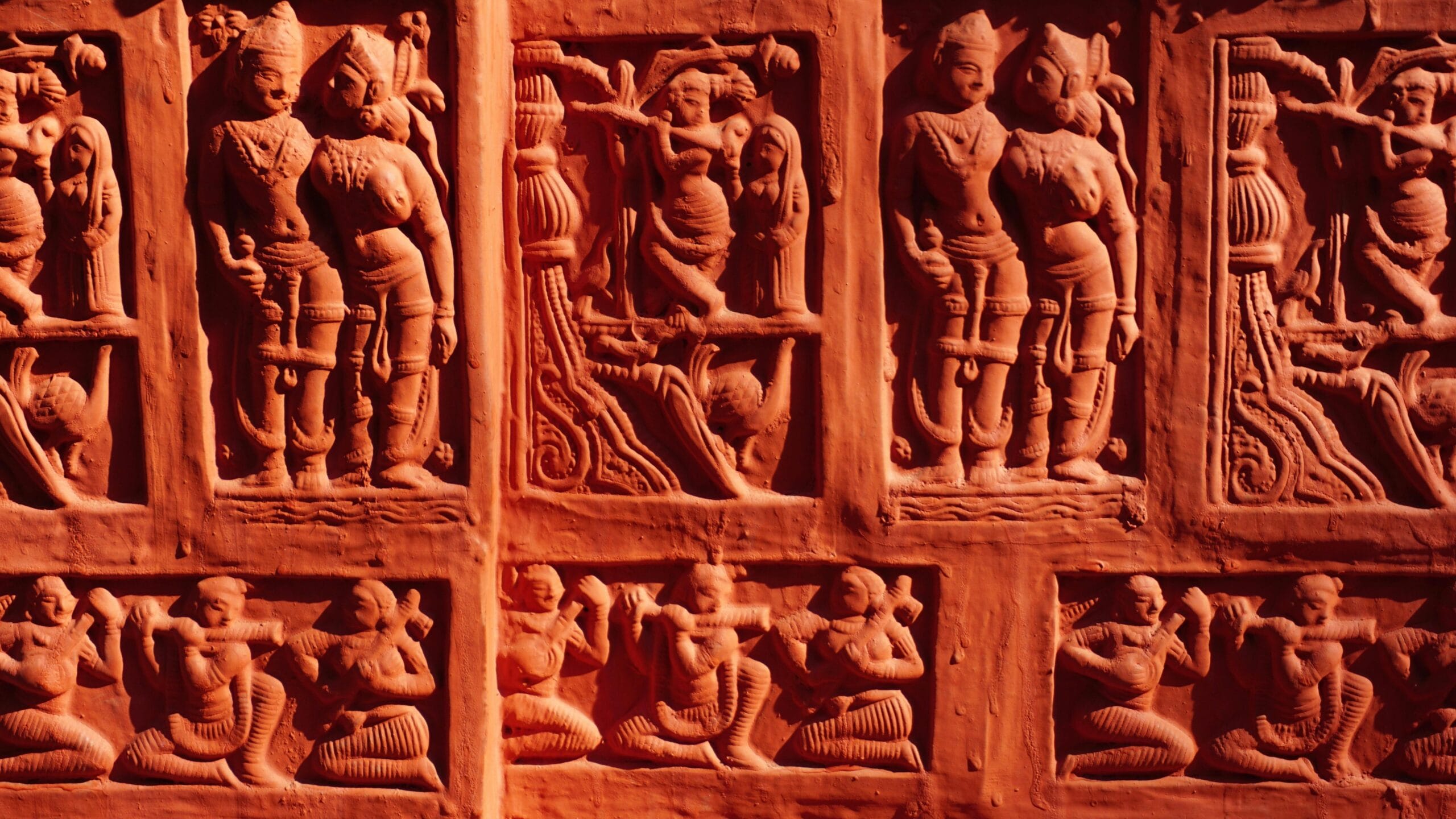The Controversial Uttar Pradesh Directive on Caste-Based Rallies
The political and social fabric of Uttar Pradesh has been significantly altered by a recent order from the state government, led by Chief Minister Yogi Adityanath. This directive, ostensibly aimed at dismantling caste-based discrimination and fostering social harmony, has ignited widespread debate and scrutiny. While proponents frame it as a measure to curb the divisive influence of caste politics, critics argue that it disproportionately targets marginalized communities and seeks to suppress their voices. This analysis delves into the order’s intricacies, its stated objectives, its historical context, and its potential ramifications for social movements and political activism in Uttar Pradesh and beyond.
Table of Contents:
Understanding the Order’s Core Provisions
The Uttar Pradesh government’s order, issued on September 23rd, outlines a ten-point plan with significant implications for the public expression of caste identity. Central to this is the prohibition of caste-based political rallies, a move framed as crucial for preventing caste-based conflicts and upholding national unity. The order also mandates the removal of caste references from police records, official documents, vehicle markings, and public spaces. Notably, it directs that the caste column be left blank in National Crime Records Bureau (NCRB) data, a provision that has alarmed those monitoring caste-based atrocities.
Removal of Caste from Official Records: A Double-Edged Sword
A critical component of the order involves eliminating caste mentions from various official documents, including FIRs, arrest memos, charge sheets, and police notice boards. The stated rationale is to mitigate potential bias and prejudice, thereby ensuring a more equitable justice system. The order further stipulates that when identifying an accused, the mother’s name should be included alongside the father’s, aiming for greater accuracy.
However, critics question the effectiveness of this measure, arguing that it could obscure the caste-based nature of certain crimes, making it harder to track and address systemic discrimination. This move feels akin to trying to treat a deep-seated illness by simply masking its symptoms; while outward signs are addressed, the underlying disease of casteism remains untreated and perhaps further entrenched by the silence.
Restrictions on Public Displays and Social Media: Silencing Dissent?
The directive extends to public spaces and vehicles, banning the display of caste-based slogans, symbols, or glorifications, and mandating the removal of caste-related signage from colonies and public areas. Furthermore, the order targets social media content, stating that any glorification or criticism of caste deemed to spread hatred or promote division will be acted upon under the Information Technology (IT) Act.

This broad scope has raised concerns about potential overreach and the suppression of legitimate discussions on caste issues, particularly the historical oppression faced by marginalized communities. Could this ban on rallies and the erasure of caste data be a sophisticated strategy to silence dissent rather than foster true equality?
The Ambiguity of ‘Criticism’ and ‘Glorification’: A Selective Ban?
A significant point of contention within the order is the ambiguous wording surrounding the prohibition of ‘criticism‘ of caste. While the intent may be to prevent hateful rhetoric, critics argue this could be interpreted to stifle legitimate critique of the caste system itself, a vital step toward its eradication. The order does, however, exempt cases registered under the Scheduled Castes and Scheduled Tribes (Prevention of Atrocities) Act, where caste mention is legally required. This exemption, while necessary, highlights the selective application of the order’s principles.
Historical Context and Underlying Tensions
This directive emerges amidst a politically charged atmosphere, particularly in Uttar Pradesh, where caste has historically been a pivotal factor in electoral outcomes. The recent Lok Sabha elections saw a significant shift in voting patterns in Uttar Pradesh, partly attributed to the consolidation of Dalit, Bahujan, and backward caste votes against the Bharatiya Janata Party (BJP).
Given this context, many view the government’s order not as a genuine effort to eradicate casteism, but as a strategic maneuver to curb the growing assertiveness of marginalized communities and their discourse on social justice. The administration in Uttar Pradesh, led by Yogi Adityanath, has faced persistent allegations of caste bias.
Allegations Against the Current Administration: A Complex Picture
The current administration in Uttar Pradesh has faced consistent allegations of caste bias. Chief Minister Yogi Adityanath has drawn criticism for reportedly taking pride in his Rajput identity and for accusations of promoting “Thakurvaad” (rule by Thakurs) within the state administration. Historical incidents, such as the alleged purification of a temple after a lower-caste leader’s visit, and reports indicating a substantial rise in atrocities against Dalits during the current government’s tenure, paint a complex picture.

Data from organizations indicates that Uttar Pradesh ranks high in cases of atrocities against Dalits, fueling skepticism about the administration’s commitment to genuine social reform. These allegations paint a complex picture of a leader whose personal identity intertwines with caste pride, while critics accuse him of perpetuating caste-based biases.
Judicial Influence and Past Litigations: A Strategic Response?
The order appears to be influenced by recent pronouncements from the Allahabad High Court. A Public Interest Litigation (PIL) filed in 2013 concerning caste-based rallies prompted the court to seek responses from the central and state governments. Separately, another bench, while hearing a case involving an individual named Praveen Khetriya, made strong remarks against the perpetuation of caste identity, suggesting the need to remove caste mentions from official documents and public spaces to achieve national development goals by 2047. Critics, however, suggest the timing of these judicial interventions and the subsequent government order is not coincidental but a calculated political maneuver, coinciding with the BJP’s electoral challenges related to caste.
Interpreting the Government’s Motives: Silencing or Uniting?
The underlying intention behind the order is a subject of intense debate. While the government maintains its aim is to foster a casteless society, many interpret it as an attempt to stifle the discourse on caste, particularly the burgeoning Dalit-Bahujan consciousness amplified by social media. By restricting public expressions of caste identity and discourse, the government, critics argue, seeks to weaken the political mobilization of marginalized communities.
Silencing the Voice of the Marginalized? Erasing Evidence?
The argument that the order disproportionately affects marginalized communities stems from historical context. For decades, Dalit, Bahujan, and backward caste parties have organized on the basis of caste to assert their rights and demand representation. These rallies are not merely political events but a crucial means of asserting identity and demanding justice against systemic oppression.
The prohibition of these rallies is thus seen as a direct blow to their political voice and organizational capacity. Furthermore, the removal of caste details from crime records, as highlighted by various reports, could make it harder to document and prosecute caste-based atrocities, effectively erasing the evidence of historical injustices.
The ‘Savarna’ Blind Spot: Selective Enforcement?
A recurring theme in the critique is the perceived selective application of the order. Critics point out that while the order prohibits caste-based rallies and public displays, it is unlikely to be enforced rigorously against upper-caste groups or their political affiliations. The argument is that upper-caste communities, particularly their political stakeholders, are less likely to engage in overt caste-based mobilization or to have their caste identity perceived as a tool for demanding rights.
Instead, the focus is often placed on blaming marginalized communities for perpetuating caste politics, thereby ignoring the role of caste in maintaining existing power structures. The emphasis on removing caste names from vehicles, for instance, is seen as more likely to impact lower-caste individuals who proudly display their identity as a symbol of defiance, rather than upper-caste individuals whose caste names are often associated with traditional power and privilege.
Data and Citations: Evidence of Bias?
Supporting these claims involves various media reports and data. For instance, reports suggest Chief Minister Yogi Adityanath’s pride in his Rajput identity and allegations of “Thakurvaad” are pertinent to understanding the context of the order. The increase in atrocities against Dalits under the current administration is also cited, with some reports indicating a significant rise in such incidents during the period compared to the previous government.
The implication that this order is a response to the BJP’s performance in recent elections, particularly in Uttar Pradesh where Dalit and backward castes voted against them, is a significant contextual point, referencing data on seat distribution based on caste demographics. Finally, the notion that this order aims to control the narrative and suppress growing awareness on social media about caste issues suggests a deliberate strategy to curb dissent.
Potential Repercussions and Future Outlook
The long-term consequences of this order remain to be seen, but initial reactions suggest a potential deepening of societal divisions rather than their resolution. By seeking to erase the public acknowledgment of caste, the order may inadvertently drive caste-based identity and grievances further underground, potentially leading to more volatile manifestations in the future.
Impact on Social Movements and Activism: Hindering Progress?
For social activists and organizations dedicated to caste eradication and the empowerment of marginalized communities, the order presents considerable challenges. Restrictions on rallies and public discourse could impede their ability to mobilize, raise awareness, and advocate for policy changes.
The threat of IT Act action for social media content might lead to self-censorship, chilling legitimate discussions on caste-related injustices. This could shift the conversation from public platforms to more private, less accessible spaces, potentially weakening the collective voice of the oppressed.
The Challenge of Enforcement: A Question of Fairness
The practical implementation of the order faces significant hurdles. The deep-rooted nature of caste in Indian society, coupled with historical reluctance to uniformly enforce laws against upper-caste communities, raises questions about the order’s effectiveness. Critics argue that while enforcement might be stringent against Dalit and Bahujan individuals and groups, it is likely to be lax or non-existent concerning upper-caste manifestations of caste pride or privilege. This selective enforcement could further erode trust in the administration and the justice system.
A Call for Genuine Reform: Beyond Superficial Measures
Ultimately, the effectiveness of any measure aimed at dismantling the caste system hinges on addressing its root causes: deeply ingrained social hierarchies, economic disparities, and persistent prejudices. Critics argue that superficial directives like the ban on rallies or the removal of caste names from public records, without parallel efforts to address systemic discrimination and promote inter-caste equality, are unlikely to achieve the desired outcome. True progress, they contend, requires a more comprehensive approach encompassing affirmative action, equitable access to resources and opportunities, and a genuine commitment to challenging the ideology of caste at every societal level.
What Can You Do?
The recent order from the Uttar Pradesh government regarding caste-based rallies and public displays necessitates a proactive response from citizens and civil society. Understanding the potential implications of this directive is the first crucial step. Engage in informed discussions about the complexities of caste and its pervasive influence on Indian society. Support and amplify the voices of marginalized communities, who are often at the receiving end of caste-based discrimination.
This can involve sharing information, participating in peaceful advocacy, and supporting policies that genuinely promote social justice and equality. Furthermore, hold political leaders accountable for their actions and demand transparency and fairness in the implementation of such orders. By staying informed and actively participating in public discourse, we can collectively work towards a society where caste-based discrimination is truly eradicated, not just superficially masked.
Disclaimer: Understanding Key Terms
This article discusses sensitive issues related to caste in India. To ensure clarity, the following terms are used in the context explained below:
- Caste System: A rigid social hierarchy in India that traditionally determines an individual’s social status, occupation, and interactions based on birth.
- Dalit: A term used for communities traditionally considered “untouchable” or outside the varna system. They have historically faced severe discrimination and oppression.
- Bahujan: Literally meaning “the majority of people,” this term refers to the collective of Dalit, Adivasi (tribal), OBC (Other Backward Classes), and minority communities who are considered the oppressed majority in India.
- OBC (Other Backward Classes): A category of castes recognized by the Indian Constitution as socially and educationally backward, eligible for affirmative action.
- Savarna: Refers to the upper castes in the Hindu social hierarchy, traditionally holding positions of power and privilege.
- Brahmins: The highest varna in the traditional Hindu caste system, historically associated with priesthood, scholarship, and religious rituals.
- Rajput/Thakur: A warrior and ruling class in the traditional Hindu caste system, historically associated with martial prowess and governance.
- Vimarsh: A Hindi word meaning “discourse” or “debate.”
- Ashram: A secluded dwelling or monastery in ancient India, used by sages and monks for meditation and instruction.
- Mahant: The head priest or abbot of a Hindu monastery or temple.
- Gau Raksha: Cow protection, a movement often associated with Hindu nationalist sentiments.
- “Ganga Jal” (Ganges Water): Considered holy in Hinduism, it is sometimes used in ritualistic purification.
Read more about Caste Discrimination: Unmasking Caste Reservation Hate
Find out more about Selective Outrage: Manual Scavenging & Caste Indifference
Do you disagree with this article? If you have strong evidence to back up your claims, we invite you to join our live debates every Sunday, Tuesday, and Thursday on YouTube. Let’s engage in a respectful, evidence-based discussion to uncover the truth. Watch the latest debate on this topic below and share your perspective!


